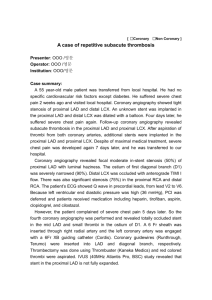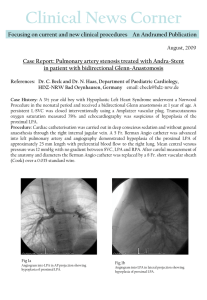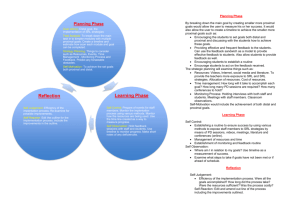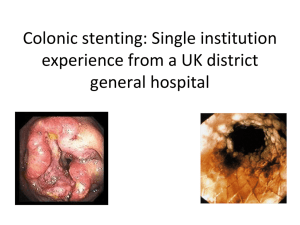ONLINE APPENDIX Online Figure 1 Trial Profile. Of all patients who
advertisement
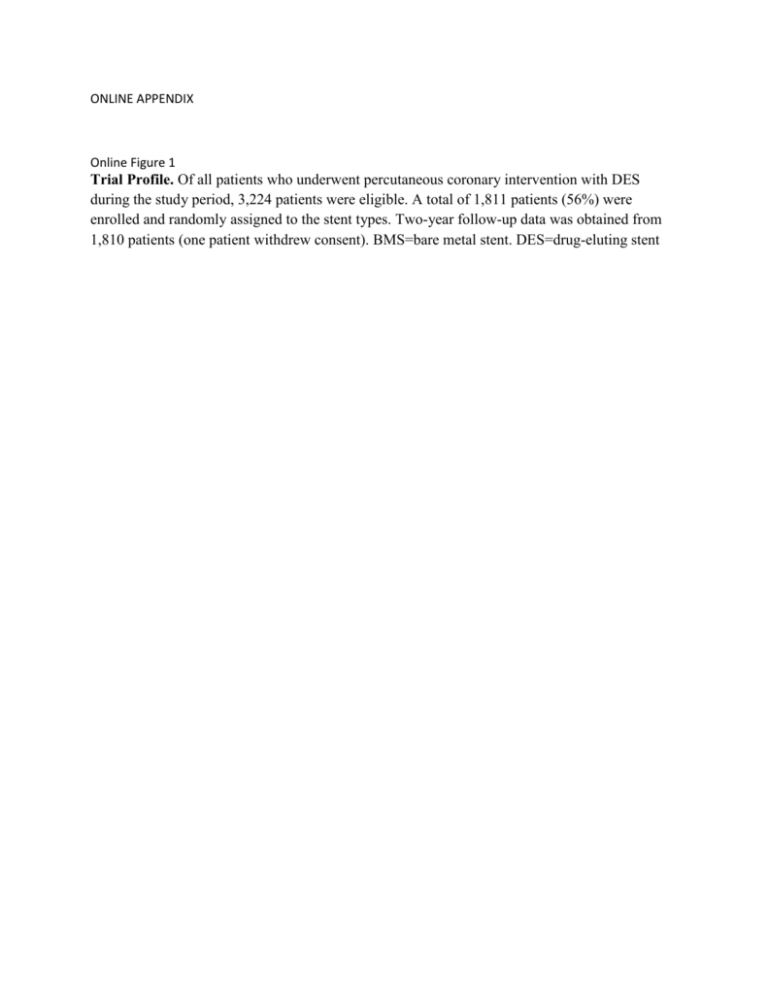
ONLINE APPENDIX Online Figure 1 Trial Profile. Of all patients who underwent percutaneous coronary intervention with DES during the study period, 3,224 patients were eligible. A total of 1,811 patients (56%) were enrolled and randomly assigned to the stent types. Two-year follow-up data was obtained from 1,810 patients (one patient withdrew consent). BMS=bare metal stent. DES=drug-eluting stent Online Figure 2. Patient-Reported Chest Pain at 1 and 2-Years (in Patients who Provided Chest Pain Information at Both Times). Patient-reported chest pain classified into 4 scores: 0= no chest pain at all; 1= chest pain only during most severe physical exertion; 2= chest pain at moderate physical effort (during moderate/normal daily activities); 3= chest pain during mild physical exertion or at rest. Panels A and B provide information about the presence and extent (i.e., pain score) of chest pain at 1 and 2-year follow-up in 1,572 patients, who were alive at 2-year followup and answered the chest pain questionnaire both times. Online Table 1. Supplement II. Outcome of patients in whom longitudinal stent deformation had been observed (all Promus Element stent group). ACC/AHA Case 1 Vessel and segment LAD, mid Lesion characteristics lesion class bifurcation RCA, mid 3 LAD, prox. bifurcation LAD, prox. bifurcation calcification 6 Left main bifurcation RCA, distal bifurcation 8 LAD, prox. moderate calcification 9 RCA, mid 7 – – C 2.5 x 32 proximal + additional proximal stent – – C 3.5 x 24 proximal + additional proximal stent – – C 2.25 x 16 proximal – additional proximal stent – – C 2.25 x 22 proximal + additional proximal stent – – B2 3.5 x 16 proximal + – – C 2.5 x 32 proximal + additional proximal stent + – C 3.0 x 12 proximal + additional proximal stent – – C 3.0 x 24 proximal + – – lesion lesion severe calcification 2-year follow-up additional proximal stent severe calcification 2-year followup + lesion LAD, prox. Procedural consequences proximal lesion 5 Postdilation of stent performed 3.0 x 38 severe 2 size (mm) Proximal/ distal location in stent Consecutive adverse clinical events until C lesion 4 Stent DAPT use at postdilation of stent postdilation of stent ACC/AHA=American College of Cardiology/American Heart Association; LAD=left anterior descending artery; Prox.=proximal; RCA=right coronary artery; DAPT=dual antiplatelet therapy. +=yes; –=no. Data except results of 2-year follow-up have previously been reported in: von Birgelen C, Sen H, Lam MK, et al. Third-generation zotarolimus-eluting and everolimus-eluting stents in all-comer patients requiring a percutaneous coronary intervention (DUTCH PEERS): A randomised, single-blind, multicentre, non-inferiority trial. Lancet 2014;383:413-23. Outcome of patients in whom longitudinal stent deformation had been observed (all Promus Element stent group). ACC/AHA=American College of Cardiology/ American Heart Association; LAD=left anterior descending artery; Prox.=proximal; RCA=right coronary artery; DAPT=dual antiplatelet therapy. + = yes; – = no. Online Table 2 (Supplement III). Anticoagulant Use at 1 and 2-Year Follow-up. Total Resolute Integrity ZES Promus Element EES At 1 year N=1776 N=883 N=883 Ascal 1575 (88.7) 786 (89.0) 789 (88.4) 0.66 P2Y12 inhibitor 437 (24.2) 227 (25.7) 210 (23.5) 0.28 DAPT 1534 (86.4) 765 (86.6) 769 (86.1) 0.75 Vitamin K antagonist 195 (11.0) 90 (10.2) 105 (11.8) 0.29 N=1753 N=872 N=881 Ascal 1523 (86.9) 760 (87.2) 763 (86.6) 0.73 P2Y12 inhibitor 205 (11.7) 102 (11.7) 103 (11.7) 1.00 DAPT 157 (9.0) 78 (8.9) 79 (9.0) 0.99 Vitamin K antagonist 214 (12.2) 98 (11.2) 116 (13.2) 0.22 At 2 years p value Values are % (n/N). DAPT= dual-antiplatelet therapy. Analysis based on survivors at 1 and 2-year, respectively.

